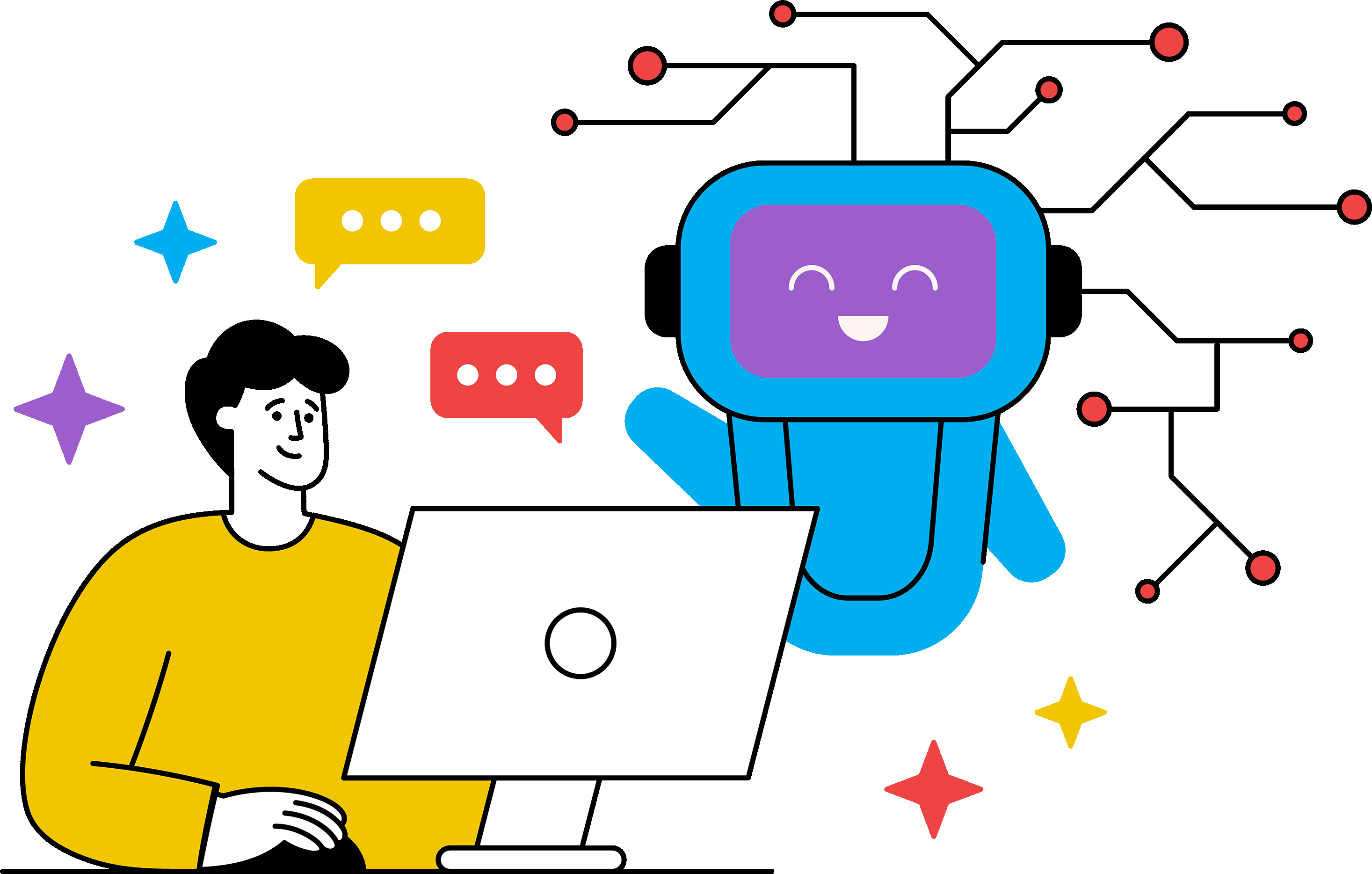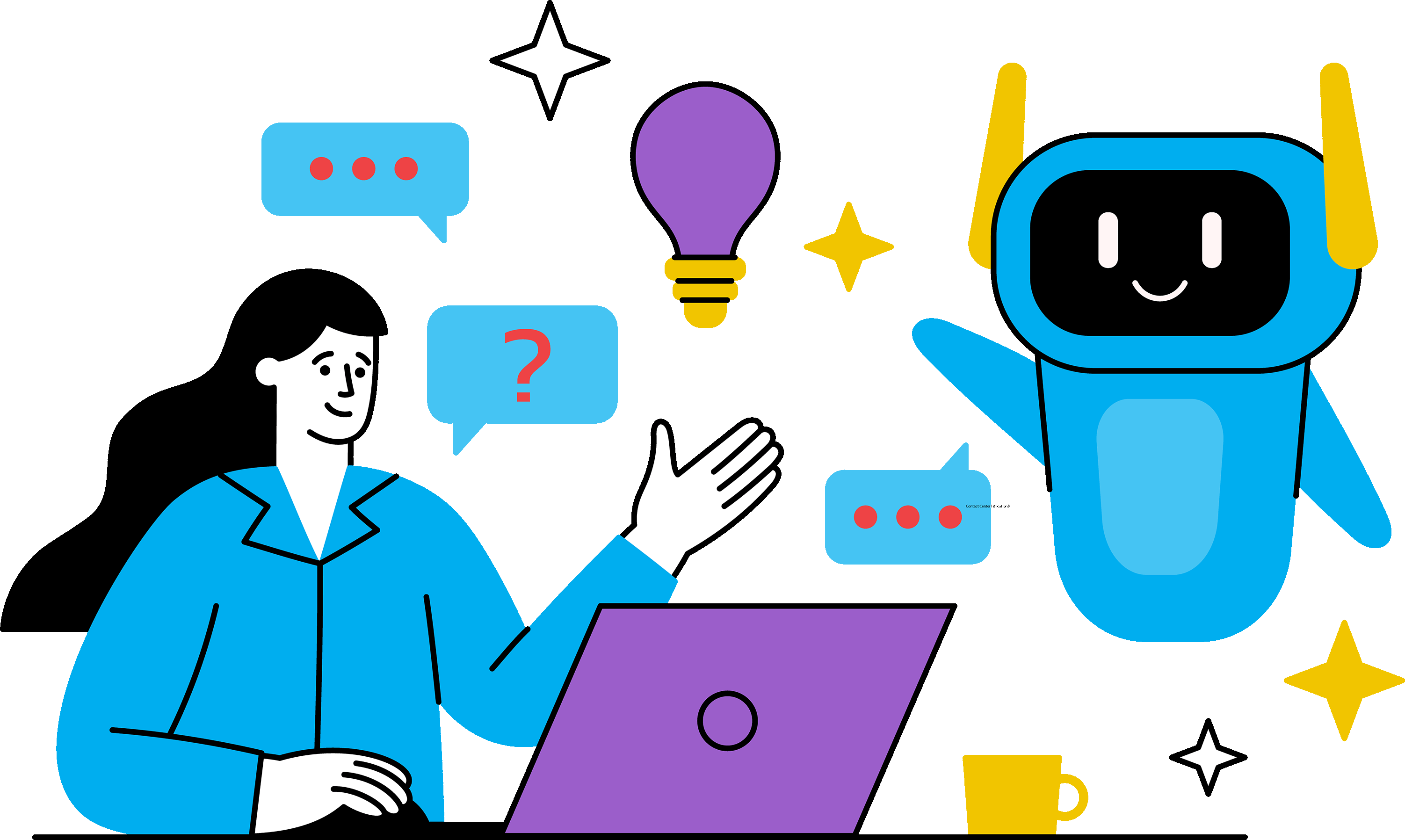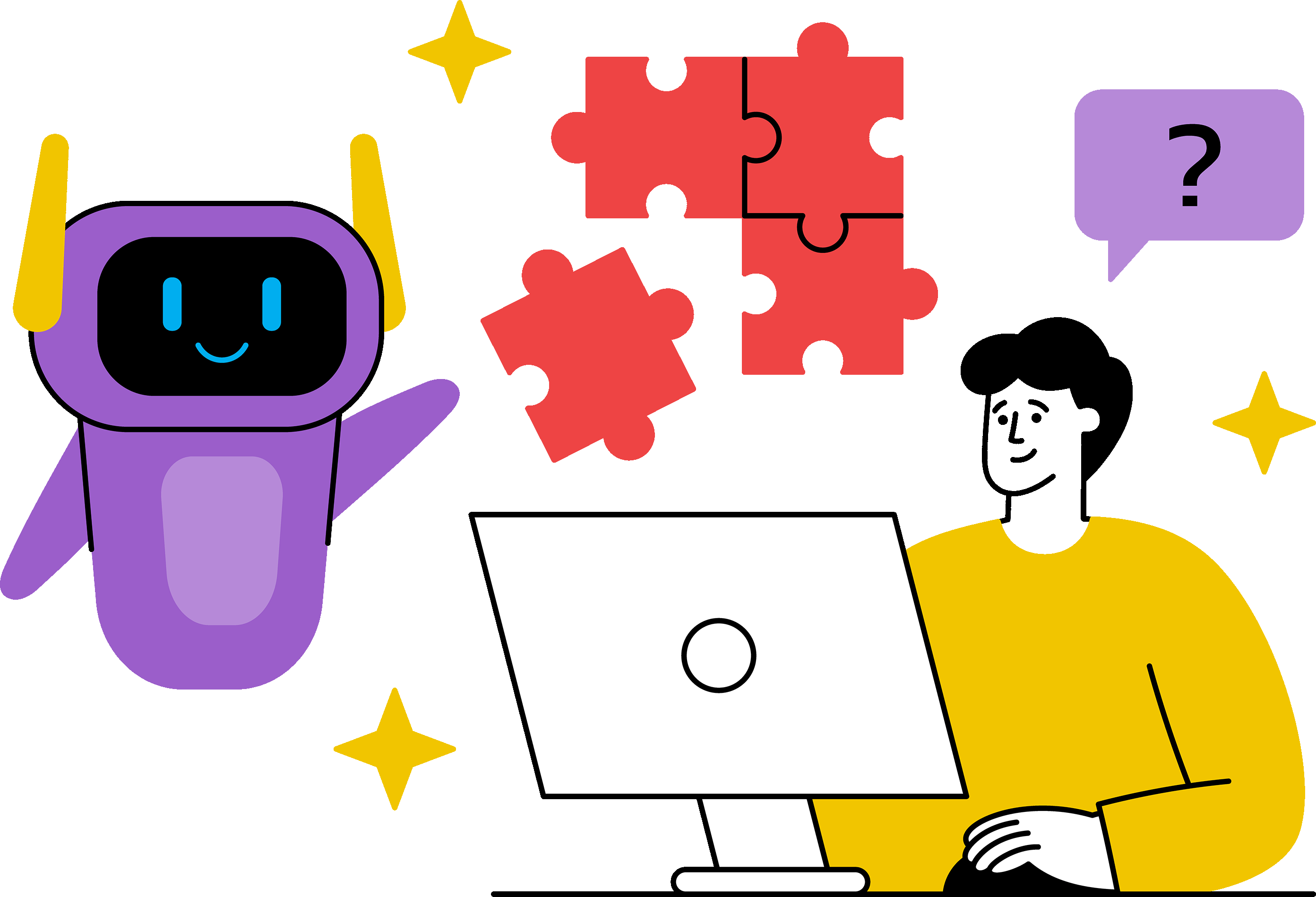The Ultimate Guide to Using AI in Education Contact Centers
by Erina Suzuki | Published On June 3, 2025

Think AI in customer service is just for retail companies? Think again. With artificial intelligence, educators can deliver better student and customer support at scale, while reducing costs. It’s a win-win for everyone. As AI becomes more versatile, sophisticated, and accessible, there’s never been a better time to upgrade your support strategy.
Leaders in the educational industry, from training providers to universities, are beginning to invest in AI too, and for good reason.
Currently, the market for AI in education is expected to grow at a rate of 31.2% through to 2030, and demand is growing fast. Forward-thinking organizations are rapidly investing in intelligent call routing tools, AI-powered chatbots and voice bots, and smart analytics.
So, what exactly can AI do for educational contact centers, and how can you launch a successful AI initiative? Here’s everything you need to know.
Why Education Contact Centers Need AI
Adding AI to your contact center is a great move regardless of which industry you serve. Intelligent tools can streamline self-service, augment human teams, improve analytics, and boost efficiency. In the education space, however, AI is particularly good at solving various complex challenges.
At the start of a new semester, before a financial aid deadline, and even around exam times, student inquiries tend to flood in all at once. And most support teams simply aren’t built to scale overnight. That’s where AI comes in. It can help organizations deal with:
- Seasonal Volume Spikes: During peak periods, such as the start of a new academic year, inquiries can skyrocket. AI chatbots and voice assistants can instantly handle thousands of simultaneous queries without breaking a sweat, working across channels.
- Repetitive Queries: Most educational contact center agents deal with the same questions frequently. How often do your teams hear “What’s the application deadline?” “How do I reset my password?” AI can automate responses to these FAQs, freeing up human agents to handle more complex inquiries.
- Omnichannel Support: Students, parents, even educational partners, expect to be able to communicate on their terms. They want to be able to reach out over phone, email, live chat, social media – you name it. AI bots can deliver unify support across all these channels.
- The Demand for Personalization: Even if you have a dedicated customer service team, personalization at scale is hard to achieve. That’s where AI can step in and help. Bots can use past interactions and data to tailor responses, offering a more human touch, even without a human behind the screen.
- Maintaining Compliance: AI can be trained to follow regulations like FERPA and PIPEDA, automatically redacting sensitive info and keeping interactions secure. Some tools can even monitor conversations for signs of potential compliance breaches.

The Benefits of AI in Educational Contact Centers
AI is becoming a major part of the education landscape. In 2025, 60% of teachers surveyed by the World Economic Forum said they were using intelligent tools to grade assessments and track student progress. In the contact center, AI can help educational groups:
Accelerate Response Times (and Improve Student Satisfaction)
AI-powered chatbots and virtual assistants can deliver consistent support to students around the clock. These tools are great at handling routine inquiries instantly, such as showing students how to apply for a grant or enroll in a new course.
Instant, intuitive, and personalized support has a direct impact on student satisfaction levels, as they spend less time waiting around for an email response or a message. Plus, AI tools can adapt to different student needs. Multilingual bots can chat with audience members in various languages, and follow them through different channels, from SMS to email, and beyond.
Deliver Scalable Support During Peak Periods
AI contact center solutions can scale to handle huge volumes of inquiries, eliminating the need to hire additional staff during peak periods (enrollment or exam seasons). The great thing about these tools is that they maintain consistency as they scale. Whether they’re handling ten questions a day, or ten thousand, AI tools never get tired or compromise on service quality.
By offloading repetitive queries to AI, your agents can focus on complex, high-value interactions- improving service quality and reducing burnout
Reduce Costs Through Automation
AI shouldn’t replace your human team. But it can reduce the number of employees you need to hire. AI can automate repetitive processes, like sending out reminders to students about enrollment deadlines, or answering common questions.
That means organizations can reallocate more of their human resources to strategic initiatives, essentially accomplishing more with less.
Access Valuable Insights
Every interaction an educational group has with a student or community member can reveal valuable insights. Unfortunately, tapping into that data can be complicated, particularly at scale. AI systems are fantastic at analyzing interactions to surface trends, patterns, and opportunities.
An AI solution can help educational groups learn more about the student journey or the channels they prefer to use for communication. Some systems can even use sentiment analysis to help groups figure out when and why satisfaction and loyalty levels drop.
Deliver Proactive, Personalized Assistance
AI-powered systems can also use predictive analytics to help organizations deliver more proactive, personalized support. For instance, an AI tool might detect which students are struggling academically based on the number of times they call a support line.
Using this information, contact center teams can proactively deliver resources to specific students, like step-by-step guides, videos, and tutorials. Or they could offer access to academic counseling or tutoring services to certain learners.
Key AI Technologies Used in Education Contact Centers
The AI technologies you use in your education contact center might vary depending on your overall goals and specific needs. Some of the most common technologies that schools and universities are experimenting with today include:
- AI chatbots and virtual assistants: Chatbots and virtual assistants powered by conversational and generative AI are fantastic at delivering 24/7 support. They can speak to students in different languages, automatically answer FAQs, track down account information, and even troubleshoot common issues.
- Natural Language Processing (NLP): NLP is the technology that empowers AI systems to understand human language (spoken or written). It helps bots to deliver more accurate, context-aware responses to student queries and can even help with routing calls and messages to the right human professional.
- Voice bots: Voice bots, often built into educational IVR systems, use speech recognition to manage inbound phone calls. They can listen to student queries, instantly respond to common questions, or direct complex issues to specific staff members.
- AI-Powered ticket routing: AI-driven ticket routing systems prioritize and assign student inquiries based on urgency, topic, and agent expertise. This intelligent distribution ensures that critical issues are addressed fast, improving student satisfaction.
- Predictive analytics: Tools equipped with predictive analytics can help educational groups stay one step ahead of student support. As mentioned above, predictive analytics can help identify students struggling to keep up. These tools can also show organizations when to expect sudden surges in support requests, so they can prepare in advance.
- Sentiment Analysis: Sentiment analysis tools assess the emotional tone of student communications, providing insights into satisfaction levels and potential areas of concern. Some bots can even adapt dynamically to changes in student tone.
- Generative AI: Generative AI tools like ChatGPT can help with crafting personalized responses and updating knowledge base content at scale. Some tools can even create email templates, forms, and personalized surveys.

How to Implement AI Effectively: Step by Step
Ready to dive into your own AI-powered contact center strategy? You’ll need to think carefully about how you’re going to design workflows, monitor results, and minimize risks.
Here’s how you can get started.
Step 1: Assess Current Contact Center Pain Points
You don’t necessarily need to infuse AI into every aspect of your contact center strategy straight away. Start by addressing your most pressing pain points.
Do you struggle with extremely high contact volumes during enrollment periods or around exam times? Do your team members often spend hours dealing with repetitive queries about application deadlines or student resources?
Maybe you’re looking for a more effective way to handle customer service journeys across multiple channels, without having to hire more staff. Find out which issues are causing the most strain for both your employees and students, and start there.
Step 2: Define Clear Goals and KPIs
Next, establish specific, measurable objectives for your AI strategy. You shouldn’t just be investing in AI to keep up with the competition. Instead, you should have a clear idea of what you want to accomplish and what kind of KPIs or metrics you’re going to monitor.
For instance, if your aim is to reduce the average time it takes for your team to respond to a student query, track average response time. If you want to increase student satisfaction levels, plan how you’re going to monitor retention rates, engagement levels, and Net Promoter Scores.
Step 3: Choose the Right AI Tools
Plenty of contact center vendors offer access to AI tools for self-service, agent support, or even just analytics. However, they don’t all cater to the specific needs of the education industry – and not every vendor will align with your specific goals.
The first thing to focus on when you’re comparing providers, is data privacy and compliance. Make sure your chosen tools can adhere to regulations like FERPA and PIPEDA. Find out how the system manages data storage and whether it offers end-to-end encryption.
Other key points to consider include:
- Build or Buy: Will you be designing your AI solution from scratch or taking advantage of a pre-built system? How much do you need to customize your tech?
- Privacy and Ethics: How ethical are the tools you’re planning on using? How effectively do they handle privacy standards and fight back against potential bias?
- Ease of Use: How easy is it for your team members to use the AI tools? Can they customize bots when necessary? Does your vendor offer training and support?
Step 4: Ensure Seamless Integration
Your AI technology needs to be connected to more than just your contact center platform. Ideally, you should be looking for a solution that offers either direct integrations or APIs to help connect your software. Prioritize integrations with data archiving tools, learning management systems, HR applications, and even billing systems.
Deep integrations between your AI solution and your CRM platform will also ensure your bots can access the information they need to personalize each customer service experience.
Step 5: Train Staff and Students
Even if your chosen AI solution is intuitive and easy to use, the right training will help to boost adoption rates. Start with your team members. Give them workshops and guides they can use to learn how to use AI systems effectively, and securely.
If your students are going to be using AI bots to fill out forms or access 24/7 support, give them guides to show them how these systems work. Set up feedback mechanisms too – designing channels where users can report technical issues or just suggest improvements.
Make sure you update your training and resources regularly, as you continue to scale your AI initiatives or experiment with new models.
Step 6: Monitor Performance and Optimize Continuously
Don’t make the mistake of thinking you can just deploy an AI system and call it a day. You should be tracking everything, from the key performance indicators you established when you were defining your goals and objectives, to the feedback you get from users.
Regularly audit and review the performance of your AI tools, checking for signs of inaccuracies, bias, or discrimination. Make iterative improvements over time, updating your tech based on the feedback you get and your performance data.

Deliver Smarter Student Support with AI
It’s easy to think of students and community members as different from standard customers. But anyone investing in their education or working alongside an academic group will still expect an exceptional level of support. Adding AI to your contact center is one of the best ways to make sure you can scale and enhance customer service, while keeping costs low.
Start by evaluating your contact center’s top pain points - AI could be the solution. Whether you’re trying to reduce wait times, scale during enrollment season, or simply improve student satisfaction, the path forward might just start with a smarter, AI-powered support strategy.
If you’re ready to discover how AI can optimize your interactions with students, parents, and alumni, contact ComputerTalk today, or request a demo of our AI-powered solutions.
More from our blog
 Like many university students, I am not 100% sure on the career path I want to take, but doing People Function Co-op at ComputerTalk has opened the door to a vast variety of possibilities that I did not even know...
Like many university students, I am not 100% sure on the career path I want to take, but doing People Function Co-op at ComputerTalk has opened the door to a vast variety of possibilities that I did not even know...
 Contact centers are the backbone of customer experience, serving as the first point of contact for resolving issues, answering queries, and building brand loyalty.
Contact centers are the backbone of customer experience, serving as the first point of contact for resolving issues, answering queries, and building brand loyalty.
 My journey first started at ComputerTalk back in 2019, right out of university, on the Application Development team.
My journey first started at ComputerTalk back in 2019, right out of university, on the Application Development team.

